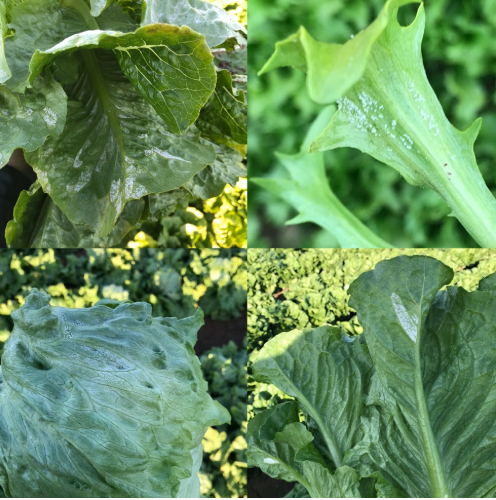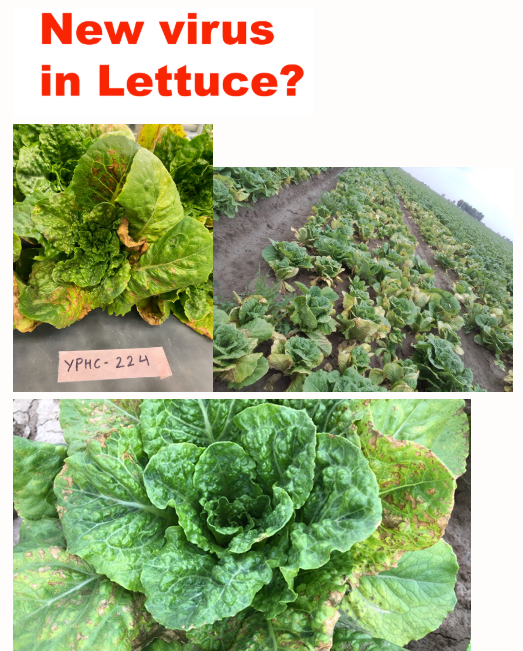
As you all know we have already had quite a few breakout of downy mildew over the holiday season. The symptoms observed are green to yellow angular spots on the upper surface of the leaves and fluffy growth on the lower side (See Picture). Symptoms usually start from older leaves. As disease progresses the lesion turn brown and dry up and in some occasions the disease can become systemic causing dark discoloration of vascular tissue.
Favorable condition for disease development:
The pathogen Bremia lactucae thrives in damp, cool condition, with moisture present on leaves. Spores are short-lived but dispersed efficiently by wind during moist period. Cultivated lettuce is the main host of the pathogen but it has also been reported to infect artichoke, cornflower and strawflower.
Why is downy mildew difficult to manage?
One of the main reason that hinders the disease management is the complexity of the pathogen. Bremia lactucae consists of multiple races (pathotypes), and new races continue to occur as pathogen evolves. The pathogen is one of the fastest evolving plant pathogen. And each pathotypes have developed insensitivity to fungicides to different extent.
One of the best practices is to grow resistant cultivar, but there are limitations. As the pathogen is highly variable and dynamic, resistant cultivars are not a permanent solution as the pathogen overcomes the resistance by evolving into virulent strains and isolates.
Preventative applications of fungicides are effective to some extent. Reducing leaf wetness and humidity by using drip or furrow irrigation can be helpful. However, weather condition like rain during cool weather as we had in past couple of weeks is conducive to development of epidemics and we have very little control on that matter.
It Takes a Village:
And better yet the whole nation or world! Downy mildew is a bigger problem than we think. It is just not a problem in Arizona and California, it is a nationwide, worldwide problem. Thousands of plant pathologist/scientists/labs are working hard everyday to combat the disease.
Dr. Michelmore’s lab in University of California-Davis has been working on downy mildew for years and they need our help to build the database for next several years. Please let me (Bindu Poudel) or anyone in University of Arizona know if you see symptoms in the field. We can come collect the samples and send it to UC-Davis. We have already sent 20 samples this month, and we will be collecting more next month. The goal is to racetype as many isolates as possible to understand the genetic variability, the more information we have about the pathogen, the more it helps the scientific community come up with better management practice, better resistant cultivars etc.

A possible new virus has been detected in lettuce plants showing lettuce dieback symptoms. The virus has been tentatively names as Lettuce dieback associated virus. The virus has shown more correlation to dieback disease than Tomato bushy stunt virus (See picture). If you see any plants with lettuce dieback symptoms please contact me (bpoudel@email.arizona.edu). I can collect samples and send them for testing. USDA scientist Bill Wintermantel (bill.wintermantel@usda.gov)has been working on the new virus. It is important that we supply more samples of the virus from our area so more information can be generated for better management. For now, we know that the virus is soilborne. For additional information please feel free to contact me or Bill. We definitely want to collect as many infected samples as we can before the end of the growing season. Thank you for your continued support.
Learn more about the Bremia Project:
https://bremia.ucdavis.edu/index.php
Bremia Project Database:
https://bremia.ucdavis.edu/bremia_database.php
|



